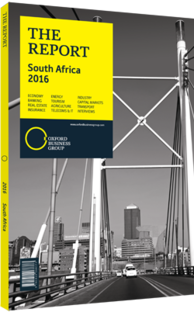South African mining industry exploring alternative energy sources in response to insufficient generation capacity
Insufficient generation capacity in South Africa led to 99 days of load shedding between January and August 2015, with the impact on the country’s energy-intensive mining industry of particular concern.
Rising Costs
Energy costs for South Africa’s mining industry have increased by over 250% since 2010, according to Peter Leon, head of Africa mining and energy at law firm Webber Wentzel. With the mining sector agreeing to cut electricity consumption by 10% in order to reduce pressure on the national grid, most companies have resorted to diesel-powered self-generation to make up the difference. However, at $0.24 per kWh, diesel-generated electricity is quadruple the $0.06 per kWh for coal-generated electricity. Without reducing activity during these off-grid periods, this would lead to a 40% rise in electricity costs.
Most companies have thus had to scale back their operations, resulting in falling output from the sector and other costs. “Electricity constraints and disruptions have had a huge impact on production volume, which is one of the two drivers of mining revenue, along with commodity prices,” Monique Mathys, the head of economics at the Chamber of Mines of South Africa, told OBG. When load shedding occurs, many mines shut down, and in the case of coal mines this could lead to feedstock shortages, thus further lowering the amount of power available on the grid.
There is variance in electricity’s share of total costs, depending on the commodity being mined and the operational environment. Deep-level mines are more energy-intensive; at most platinum-group metal mines electricity accounted for 8% of total costs in 2015, up from 4% in 2008. South Africa’s gold mines, which are some of the oldest and deepest in the world, have been hit the hardest, with electricity increasing its share of total costs from 5% in 2008 to 20% in 2015. In December 2014, Neal Froneman, CEO of Sibanye Gold, announced the company is unlikely to deepen its mines due to the poor reliability of power.
Additionally, should Eskom receive the 25% tariff hike it has requested from the National Energy Regulator of South Africa for the 2015-16 year, some marginal gold and platinum mines could be forced to close. Dawie Mostert, senior vice-president of technical services at Sibanye Gold, warns that rises in electricity prices could shave up to 15% off the producing lifespan of the firm’s mines.
New Power Sources
Even with adequate feedstock and the Medupi and Kusile coal-fired stations coming on-line, Michal Kotze, Africa mining industry leader at PwC, notes that, “Added capacity will not make up for what the country will lose from its aging power plants. Without significant outside involvement from the private sector, shortages will continue.” Renewables are a possibility, but Mathys points to from coal independent power projects (IPPs) as a more likely solution, noting, “New capacity from renewables alone over the next five years is unlikely to allow for stability in supply and growth in electricity for South Africa as a whole, especially for energy-intensive users such as the mining sector.” With 5423 MW in projects approved in the past four years, of which 1827 MW was on-line by August 2015, renewable IPPs’ average capacity at any given time is one-third of total capacity due to the intermittent nature of wind and solar sources. Despite this, Sibanye Gold is investing R3bn ($259m) in a solar-powered plant and possibly purchasing existing coal assets as a means of generating its own power.
Over the short-term, Mosa Mabuza, deputy director-general of mineral policy at the Department of Mineral Resources, thinks that improving energy efficiency at mines will yield results. “Historically cheap electricity in South Africa led to technologies and methods in mining that were not energy-efficient. It is time to make a quantum leap in this area,” Mabuza told OBG, adding that three major mining firms have recently installed more efficient fuel cell capacity.
You have reached the limit of premium articles you can view for free.
Choose from the options below to purchase print or digital editions of our Reports. You can also purchase a website subscription giving you unlimited access to all of our Reports online for 12 months.
If you have already purchased this Report or have a website subscription, please login to continue.

